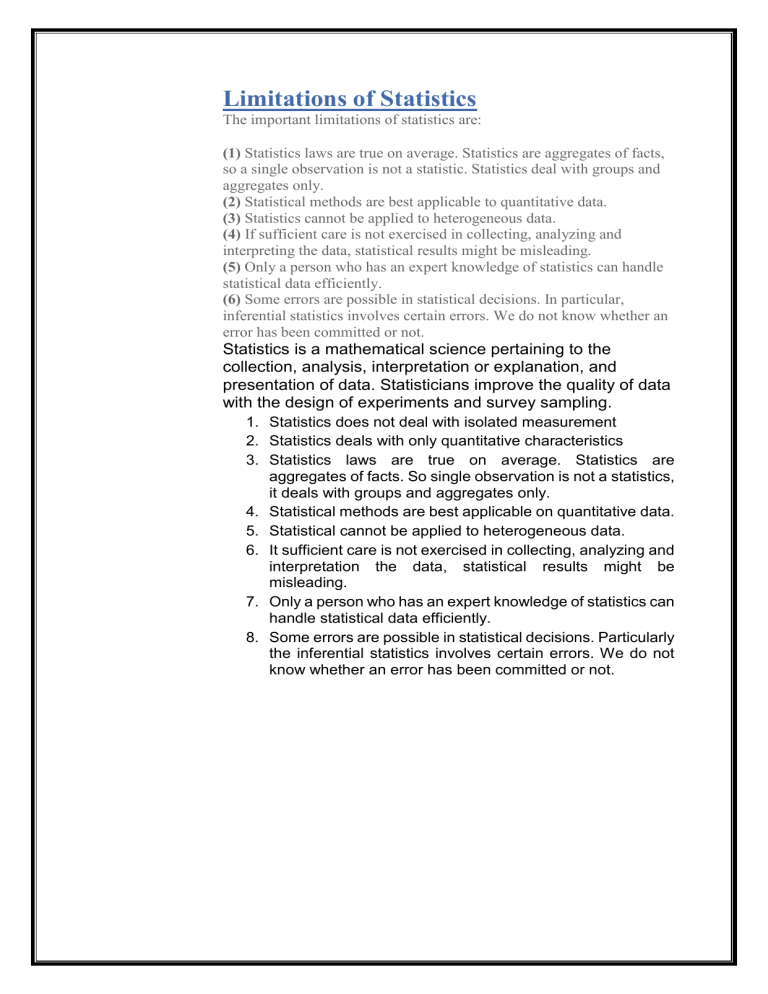
Limitations of Statistics The important limitations of statistics are: (1) Statistics laws are true on average. Statistics are aggregates of facts, so a single observation is not a statistic. Statistics deal with groups and aggregates only. (2) Statistical methods are best applicable to quantitative data. (3) Statistics cannot be applied to heterogeneous data. (4) If sufficient care is not exercised in collecting, analyzing and interpreting the data, statistical results might be misleading. (5) Only a person who has an expert knowledge of statistics can handle statistical data efficiently. (6) Some errors are possible in statistical decisions. In particular, inferential statistics involves certain errors. We do not know whether an error has been committed or not. Statistics is a mathematical science pertaining to the collection, analysis, interpretation or explanation, and presentation of data. Statisticians improve the quality of data with the design of experiments and survey sampling. 1. Statistics does not deal with isolated measurement 2. Statistics deals with only quantitative characteristics 3. Statistics laws are true on average. Statistics are aggregates of facts. So single observation is not a statistics, it deals with groups and aggregates only. 4. Statistical methods are best applicable on quantitative data. 5. Statistical cannot be applied to heterogeneous data. 6. It sufficient care is not exercised in collecting, analyzing and interpretation the data, statistical results might be misleading. 7. Only a person who has an expert knowledge of statistics can handle statistical data efficiently. 8. Some errors are possible in statistical decisions. Particularly the inferential statistics involves certain errors. We do not know whether an error has been committed or not. Scope of statistics in computer science 1. A deliverable = something that is possible with hardware and software 2. A number of calculations that aim at keeping computing sound - eg stats re liniarity/scaleability 3. A crucial part of algorithms that aim at learning, eg baesian statistics 4. A systematic representation of user behaviour 5. A way to size up tasks to be performed (eg how “big” are the data) 6. A toolbox for error detection 7. A toolbox for prediction of future demand/needs 8. A research area in its own right - exploring the borders of statstics with no defined purpose 9. An approach and mindset aimed at getting the most of what most people seem to want 10. A bridge between qualitative and quantitative Statistics in computer science are used for a number of things, including data mining, data compression and speech recognition. Other areas where statistics are use in computer science include vision and image analysis, artificial intelligence and network and traffic modeling.




